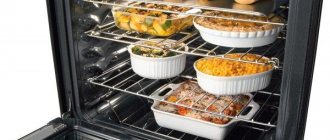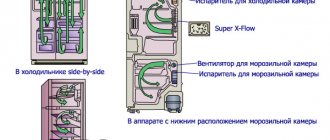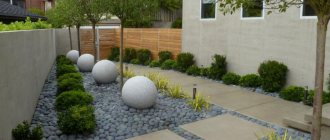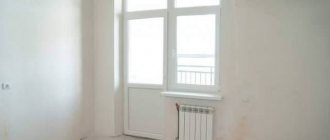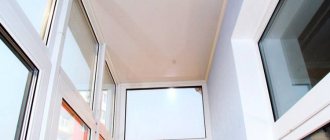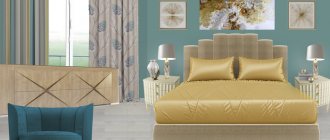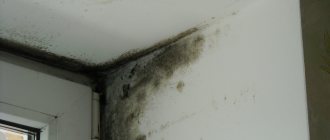The main characteristics that determine the state of the surrounding atmosphere are temperature and humidity. Excess humidity in a house or apartment leads to the growth of mold on the ceiling and walls, causing colds. At the same time, too dry an atmosphere in the apartment also does not bring anything good. This air dries out the mucous membranes of the respiratory tract, which deprives them of their protective properties. A hygrometer solves these issues by controlling changes in humidity in one direction or another. Read on to find out what hygrometers are for, how to choose them, and which 7 devices made it into our independent Top.
How to choose the right hygrometer
A hygrometer is a device that measures the level of moisture in the atmosphere. There are devices of various designs. Some of them show the absolute amount of water vapor in 1 m3 of air mass. Others measure the moisture content in the air as a percentage. Still others show the dew point - the temperature at which water vapor contained in the air condenses on a cold surface.
Hygrometers come in the following types:
- hairline _ The principle of operation of such devices is based on the fact that the length of thin hair changes in response to the amount of water with which it comes into contact;
- weight . The device consists of tubes bent in the shape of a U, filled with a hygroscopic substance. Air is pumped through this system in a certain amount. Moisture from the air settles on the tubes. At the same time, their mass changes. The difference in the weight of the tubes before and after pumping air becomes an indicator of humidity;
- mechanical (ceramic) devices . The work is based on a change in the electrical resistance of a mass that contains metal or ceramic components;
- condensation device . The design includes a cooled surface on which moisture condensation occurs;
- electronic device . This model allows the use of various operating principles, including determining the dew point by the optoelectronic method, measuring the electrical conductivity of air, monitoring changes in the capacitance of a polymer or metal oxide capacitor, measuring the electrical resistance of polymers or salts that change depending on humidity;
- psychrometric device . It is used when measuring relative air humidity with two thermometers, one of which is placed in humid conditions.
Electronic mirror dew point hydrometer
The dew point is the temperature at which a sample of moist air (or any other water vapor) at constant pressure reaches water vapor saturation. At this saturation temperature, further cooling causes water to condense. How to use an electronic hygrometer? Electronic mirror dew point hydrometers are among the most accurate instruments available today. They use a cooled mirror and an optoelectronic mechanism to detect microcondensation on the mirror surface.
The mirror temperature is controlled by electronic feedback to maintain dynamic equilibrium between evaporation and condensation, thereby carefully measuring the dew point temperature. These devices require frequent cleaning, a trained operator, and periodic calibration to achieve a high level of accuracy. More recently, spectroscopic cooled mirrors have been introduced. In them, the dew point is determined using spectroscopic analysis, specifying the nature of condensation. Their main advantage is that they operate at temperatures down to –70°C.
Performance indicators of hygrometers
The best hygrometers for determining humidity in residential areas should have a measurement range of 20 to 70%. The same device is suitable for controlling humidity when growing indoor plants. However, in humid conditions of basements, baths or saunas, you will need a hygrometer with a range of up to 100%.
Air humidity meters are characterized by measurement accuracy. For ordinary household hygrometers, a measurement scale with a division of 2-3% will be sufficient. If you need high measurement accuracy, then the best hygrometers will have a division value of 1%.
The accuracy of hygrometer readings depends on the air temperature and the type of device. Devices with minimal error are used in high-precision measurements.
Indoor hygrometer: types and functions of the device
The psychrometric method is used to change air humidity in residential, public and industrial buildings. How to use a psychrometric hygrometer? The device consists of two thermometers. The end of one of the thermometers, in the psychrometric body on the right, is wrapped with the end of a small cloth - a wick (medical bandage) in several layers, and the second is lowered into a container with clean water. The glass is closed with a special lid, which has a hole for the wick. The wet bulb temperature begins to drop as heat is absorbed; the equilibrium point between evaporation and the decrease in wet bulb temperature occurs after approximately 30 minutes.
A dry bulb measures the temperature of the indoor air in a room, while a wet bulb measures the temperature of the indoor air. How to use a psychometric hygrometer is described in detail in the instructions that come with the device. The panel contains psychrometric tables for determining air humidity. Removal is carried out by an employee without delay, since a long stay near the device can change the readings and distort the result of measuring humidity. For the most accurate result, the device must be installed so that the operator’s eyes are located at the level of the meniscus of the thermometers.
The most common indoor psychrometers are the thermometer-hygrometer VIT-1 and VIT-2. Structurally, they are very similar, but have significant differences in the field of application, so VIT-1 is used when the air temperature in the room is from 0°C to +25°C, and VIT-2 is used when the air temperature in the room is from 0°C to +25°C, and VIT-2 is from +15°C to +40°C.
An example of determining air humidity with a psychrometer:
- Dry bulb temperature: +23.0°C;
- wet: +20.5°C;
- temperature difference: +2.5°C;
- Using the psychrometric table on the panel, we determine the relative humidity: 77%.
This indicator of relative humidity is unacceptable, since GOST 30494-96 “Indoor microclimate parameters” establishes the following humidity standards:
- Winter/autumn - 30-45%;
- spring/summer - 30-60%.
Ways to reduce indoor humidity:
- In winter. Ventilate the apartment. It is better if there is an opportunity through supply ventilation with warm air.
- Use a dehumidifier.
- Find possible leaks in water supply networks.
- Use air conditioning in heating mode.
- Turn on the kitchen hood.
TOP 7 best hygrometers
Best Accurate Tabletop Hygrometer
TFA 45.2020
The analog thermo-hygrometer is characterized by high measurement accuracy. The compact size device is attached to the wall or fixed on the table.
The device is suitable for climate control in living areas, storerooms and testing laboratories. Temperature measurement range from -20 to 40°C, accuracy +/- 1°C, humidity +/-3% from 35 to 70% at 20°C. It does not require batteries. The price of 4,000 rubles does not seem excessive with such measurement accuracy.
Price: RUB 3,990
The best hygrometer for baths and saunas
TFA 40.1012
High-precision hair device for measuring humidity in a sauna or bathhouse. The device is equipped with a durable, heat-resistant wooden case. Provided for wall mounting. Measurement scale from 0 to 100% with 1% division. For clarity, the range from 0 to 30% is marked in green. The cost of 2200 rubles is affordable even for a modest budget.
Price: ₽ 2,200
Best weather station
Stadler Form Selina
The weather station allows you to measure temperatures from -10 to 50°C, as well as indoor humidity levels from 25 to 98%. There is an additional option - a clock. Power is provided using autonomous CR2016 batteries. Weight 70 g. Charge indicator provided. For such indicators, the price of 2000 rubles is within the power of any user.
Price: ₽ 1,990
The best electronic hygrometer
Tabletop thermohygrometer Megeon 20207
Megeon 20207 measures humidity, air temperature, and displays time in 12 or 24 hour format. There is an alarm clock and date display. The device records the maximum and minimum humidity and temperature values in memory. For such a multifunctional device, the price of 1000 rubles is very favorable.
Price: ₽ 990
The best mechanical hygrometer
Boneco A7057
A mechanical device determines the level of relative humidity in the room. The scale operates in the range from 20 to 100% humidity. The level recommended for humans is highlighted in color (from 45 to 65%). The device has an original design and compact dimensions. The price of 500 rubles will suit any buyer.
Price: ₽ 488
The best hygrometers-psychrometers
Hygrometer Steklopribor VIT-2
The device uses distilled water, so the device cannot be used in rooms with air temperatures below 0°C. The minimum temperature for it is -20°C, the maximum is 40°C. A temperature scale with 2 capillaries is attached to a plastic base. The scale plate with the table is made of metal. For such a device, the price of 350 rubles is quite suitable.
Price: ₽ 350
Hygrometer Steklopribor VIT-1
The operating principle of the device is based on determining the relative humidity of the surrounding air using a psychrometric table. The result is determined by the reading of the “dry” thermometer and the difference in the readings of the “wet” and “dry” thermometers. The table and scale are made of metal. Toluene is used as a thermometric liquid. Relative humidity measurement range is from 20 to 90%, temperature humidity measurement range is from 5 to 25°C. Temperature measurement range from 0 to 25°C, scale division 0.2°C. 310 rubles is the most affordable price from the proposed list of devices.
Price: ₽ 310
Basic methods for measuring indoor air humidity
It is necessary to measure the temperature in the room with a regular thermometer (the readings are recorded). Then wrap the reservoir with mercury in a wet bandage or cotton wool. Take readings after 10 minutes. The data from the “wet” measurement is subtracted from the “dry” one, and the result is found in Assmann’s psychometric table.
Glass method
Any glass vessel is filled with water and cooled to 3-5°C, then placed in the room where measurements need to be taken, away from heating radiators and other heating devices. Humidity is determined by the presence of condensation on the outer walls of the vessel after 5-10 minutes:
- The walls are dry (at first they fogged up, then dried in 5 minutes) – the humidity level is critically low and is approximately 20-30%;
- The walls are foggy - the humidity is normal (40-60%);
- Condensation flows down in streams - the humidity is high (70% or more).
Method "Bumps"
To measure you need a simple spruce cone. How does a pine cone hygrometer work:
- The scales are pressed tightly to the base - excessive;
- The scales protruded, the cone opened - insufficient;
- The scales are half open - the humidity is normal.
If you place the cone vertically near a cardboard wall and insert a twig into one of the scales, then after calibration you will get a humidity indicator
The indoor air humidity level is very important information. If it exceeds the norm, it can lead to chronic pulmonary and bronchial diseases. The emergence of mold and mildew, which causes the destruction of finishing materials and building structures, and can also trigger the development of allergies and asthma.
Dry air is also harmful to health; it dries out the nasopharyngeal mucosa, depriving it of its protective properties.
Dependence of air quality on humidity level
In summer, air humidity can be normalized by regular ventilation. In winter, this method cannot be used often; moreover, the operation of the heating system is an additional factor that upsets the balance. To avoid deviations and maintain the humidity in the room at the optimal level, you need to know exactly the current indicator.
This is especially important if elderly people, small children or people suffering from asthma, chronic cardiovascular and pulmonary diseases live in the apartment.
You can increase the humidity in a room not only by technical means, but also in a natural way with the help of aesthetic devices.
There are a number of initial parameters that need to be determined before buying a room hygrometer. Where it will be installed: living room, kitchen, bathroom or sauna. The selection of operational characteristics depends on this:
- Working measurement range. For most models of household appliances this is 20%...80%, despite the fact that the scale indicates from 0 to 100%. If the actual room humidity value falls outside this range, the measurement accuracy deteriorates significantly. More accurate consumer electronic devices measure values in the lower limit of 6-15%, for industrial devices this figure is 2-5%, the upper limit in both cases is 95-100%.
- Accuracy. Budget and middle-class devices can make errors of up to 5-10%. For more accurate devices, an acceptable error is considered to be 1-3%. In this case, the measurement accuracy drops significantly when approaching the limit values of 10% and 95%.
- Measurement frequency (relevant for electronic devices). For household appliances, a completely acceptable value is 10-30 seconds. The price of room hygrometers that carry out measurements at the level of industrial models is 0.5-1 seconds. unreasonably high, since such frequency and accuracy is excessive for everyday use.
- Additional functionality. Most devices for home use are designed as multi-function devices that can provide data on temperature, time and pressure. Some models receive information from external sources. In this case, remote sensors can be installed both in other rooms and on the street. The most advanced models synchronize with PCs or smartphones and transfer collected data to them for maintaining statistics or controlling heating and humidifying devices.
To care for newborns, it is advisable to buy a baby monitor for your apartment that has a hydrometer, thermometer and other functions. For example, the Philips Avent SCD580/00 model is additionally equipped with a night light and a starry sky projector.
The body is made of plastic with a high-quality texture of ash, beech, and walnut. Will fit harmoniously into the interior of an office or library. The brightness of the numbers on the display is adjusted both manually and automatically - at night it is halved.
An air humidifier with the function of automatically monitoring room humidity, equipped with a hygrometer.
Model PB-08
It is a device with an analog dial that displays temperature, humidity and pressure data. Made in a classic style for yacht equipment.
They measure air temperature and humidity both through sensors installed inside the device and receive information from an external detector via a radio channel. Transfers consolidated data to a PC via wi-fi.
Mechanical and psychometric (price 1000-1500 rubles and 350-600 rubles, respectively) on medical equipment websites.
Electronic devices and home multifunctional weather stations on websites and in consumer electronics stores. The cost of electronic devices, depending on this functionality, can range from 500 to 2000-3000 rubles.
Specialized devices - moisture meters, which can also perform the functions of hygrometers with higher accuracy, can be purchased on special websites for tools and measuring instruments. The cost of specialized devices reaches 5,000-10,000 rubles
We will be glad if you share your feedback or experience in operating hydrometers of various brands and types.
Read more: 15 best gaming headphones with microphone
MAYBE
Comparison table of the best hygrometers
| Name | Main characteristics | Price |
| TFA 45.2020 | Characterized by high measurement accuracy, suitable for climate control in residential premises, storerooms and testing laboratories, temperature measurement range from -20 to 40°C, accuracy +/- 1°C, humidity +/-3% from 35 to 70% at temperature 20°C. | ₽ 3 990 |
| TFA 40.1012 | Equipped with a durable heat-resistant wooden case, wall mounting, measurement scale from 0 to 100% with 1% division. | ₽ 2 200 |
| Stadler | Allows you to measure temperature from -10 to 50°C, as well as indoor humidity levels from 25 to 98%, there is an additional option - a clock. | ₽ 1 990 |
| Megeon | Measures humidity, air temperature, shows time in 12 or 24 hour format, has an alarm clock, date display. | ₽ 990 |
| Boneco | Determines the level of relative humidity in the room, the scale operates in the range from 20 to 100% humidity, the level recommended for humans is highlighted in color (from 45 to 65%). | ₽ 488 |
| Glass device VIT-2 | A temperature scale with 2 capillaries is attached to a plastic base; the scale plate with a table is made of metal. | ₽ 350 |
| Glass device VIT-1 | Relative humidity measurement range is from 20 to 90%, humidity measurement temperature range is from 5 to 25°C, temperature measurement range is from 0 to 25°C, scale division is 0.2°C. | ₽ 310 |
Review of popular models of room hygrometers
Let us immediately note that it does not matter or, let’s say, is not so relevant when choosing thermohygrometers for production needs.
Professional measuring instruments - not only for microclimate parameters, but also lux meters, sound level meters, anemometers, laser pyrometers, the vast majority of which are designed to be carried in the hands.
Moving both within the building - through offices, offices or factory workshops, and between remote objects, the occupational safety specialist holds a hygrometer thermometer, measuring humidity and temperature both in the center of the room and by bringing the sensor to the exhaust systems.
As a rule, bright colors and emoticons, as well as “nice little things” such as an electronic watch and an alarm clock, are not important.
Hence the conclusion - the display can be reduced in size several times.
As a consequence, due to this it is possible to modify the shape of the control and measuring device.
The thermometer and hygrometer for industrial needs is “extended” in height and is not at all similar to its household “brother” for the home.
For finger fixation, a narrowing is provided on the body, which is typical, for example, for needle wood moisture meters, in order to apply force and immerse the electrodes in the wood sample.
https://www.youtube.com/watch?v=ULXYVQq7GBM
In the middle part there are control keys. Above is the display.
But the sensors are at the very top, placed as far as possible from the hand.
Why does an industrial electronic thermohygrometer have such a device?
There are two answers.
- Temperature measurement range. The upper limit, depending on the model, reaches 60-70℃. If your palm gets exposed to hot air, even for a few seconds at a minimum, there will be discomfort and, at maximum, a thermal burn.
- Specifics of measurements.
A combined hygrometer thermometer is often placed in ventilation openings, exhaust systems, and air ducts.
Conclusion - in a professional digital thermohygrometer, the sensor should be as far as possible from the holding point.
The next question is - maybe it’s worth moving the sensor even further, for example on a wire, as in some lux meters, moisture meters - for wood, bulk materials, soil, sound level meters or anemometers?
This will not affect the accuracy of the result, but it will definitely affect the convenience of measurements.
Let's give a practical example.
At the top, under the ceiling, there is an air duct, where at the outlet it is necessary to control the outgoing air flow.
You can “get” to the top by stretching out your hand, but the problem is that the thermometer and hygrometer with display also reaches up along with the sensor.
Read more: Top 10 best unicycles according to reviews in 2020
It is not comfortable to observe the readings.
Thermohygrometers with a remote sensor are more practical in this regard.
In one hand there is a measuring unit with controls and a display, in the other there is a remote sensor.
Since the sensors are constantly “washed” by air flow, the faster the reaction will be:
- the less time we will spend on measurements;
- the control and measuring device will respond faster to the dynamics of changes.
Typically, industrial instruments for measuring temperature and humidity are configured to poll the sensors within 1 time per second.
It can be done faster. But it's not necessary. The eyes won't have time to react. Don't forget about the inertia of the retina.
The TV also changes frames with a frequency of 50 Hz, and we don’t notice it.
Logger - temperature recorder
This is a special professional electronic thermohygrometer, but we decided to talk briefly about it because it has an order of magnitude more advanced functionality.
The maximum data that hygrometers and thermometers, both household and professional, can record in digital memory are peak (maximum and minimum) and average values.
Only 3 digits.
Logger – temperature recorder stores several dozen values in digital memory.
Depending on the polling frequency that is set, automatic recording of readings can occur for many hours.
Scope of application: long-distance transportation of perishable goods, food, medicines, frozen meat.
The customer installs and seals a temperature and humidity recorder - a digital logger for the entire duration of the “journey”.
After arriving at the final point, the information is read using specialized software.
Why do you need an automatic thermohygrometer - temperature and humidity recorder?
Product supply contracts specify maximum fluctuations in microclimate parameters.
The logger will clearly record whether the temperature is exceeded by at least 1 degree or humidity by 1%.
This is the basis for possible pre-trial settlement or litigation.
You can read about a datalogger - a temperature and humidity recorder, with a detailed explanation of the operating principles and practical examples.
Specialized pyrometers—temperature recorders—that transmit data online via a USB port to a laptop have similar capabilities.
Multifunctional measuring instruments
The majority of the cost structure of control and measuring instruments is occupied by displays, microprocessors, and other electronic components, and thermohygrometers are no exception.
Sensors cost the least.
This means it is logical to develop a device with sensors connected through connectors.
There can be 2,3 or even 5 such sensors.
I connected the impeller - I get a wind speed meter (anemometer), a photodiode - a digital lux meter.
And if we add temperature and humidity sensors, we get a hygrometer and thermometer rolled into one.
This option is preferable if a comprehensive analysis of many quantities that are heterogeneous by measurement method is required.
You can also find other measuring instruments on sale with the function of determining humidity, for example, infrared thermometers and air moisture meters.
In summary, when answering the question of which hygrometer to choose, you should follow several mental steps:
- Scope of application: professional/household.
- Additional functionality.
- Design and comfort of observing results.
- Fastening and installation method.
- Price.
It seems like there are so many points, but in fact you can choose a hygrometer and thermometer in 5 minutes by reading the characteristics, looking at photos and videos, and the subconscious voice will say, “yes, this is exactly what you need.”
And in order not to spend many hours searching for a suitable thermohygrometer, we hope our little research will help you with this.
In order to choose the best device for yourself, you first need to figure out exactly what functions you need. Its cost directly depends on how many additional functions it includes. It makes no sense to purchase a barometer-hygrometer-thermometer all in one if you only want to know the relative humidity.
Another important selection criterion is the operating range of the device and the accuracy with which it works. Ideally, the operating range of a hygrometer should be from 0 to 100%, although in living rooms it is possible to use devices with a scale of 20-80%. In this case, the instrument error should be minimal. Although, it is worth recognizing that the error of a conventional electronic hygrometer can range from 5 to 10% depending on the model.
The optimal level of air humidity in the room is 40-60%
The amount of time it takes the device to receive data also plays a significant role. The cheapest and most common models today perform all the necessary measurements and calculations in a period of 30 to 60 seconds. This is quite long and it is better to look for more modern models, the operating time of which has been reduced to 1-5 seconds.
It is interesting that modern instruments that professionals use in their work are capable of obtaining the most accurate data in just one tenth of a second.
There are two possible answers to the question of where to buy a hygrometer for an apartment. On the one hand, you can take time to do this and visit a specialized store, where, after looking and studying each proposed model, choose the most suitable one. On the other hand, you can make a choice based on reviews posted on websites and forums and order the device via the Internet.
Electronic hygrometer showing air humidity indoors and outdoors
Another popular combination is a humidifier with a hygrometer. Buying such a device is not difficult, but its use also has some subtleties. The main problem is that air humidity is measured in close proximity to the moisture source, which means it is quite difficult to consider this data reliable.
Read more: 7 best composters
It goes without saying that homemade appliances are also used in everyday life. So, making a room thermometer-hygrometer with your own hands is quite simple. But it is worth considering that the error that you will encounter while using it will undoubtedly be greater than in the case of using an electronic or mechanical hygrometer.
A hygrometer in modern design will decorate your interior
You can buy a mechanical hygrometer of fairly high quality, but without any additional functions, for 500-600 rubles. At the same time, it is unlikely that you will be able to buy an electronic hygrometer for that kind of money, since the cost of this type of device starts from 1-2 thousand rubles and can double.
Mechanical Indoor Tabletop Hygrometer
The most interesting, and at the same time expensive option that can be found is a home weather station, which is a wall clock with a barometer, hygrometer and thermometer. Prices for such kits start from 5 thousand rubles and can increase significantly due to the original design of the design, as well as rare and expensive materials.
The ability to simultaneously control indicators such as temperature and humidity, as well as atmospheric pressure, is an undoubted advantage of systems such as home weather stations. And although buying a hygrometer, barometer and thermometer is not a very cheap pleasure, it is undoubtedly justified.
FAQ
What is the difference between a hygrometer and a psychrometer? Psychrometers measure the relative humidity of the air. They work by taking into account the physical property of a liquid (for example, water) to evaporate under the influence of temperature differences. A hygrometer is based on changes in the physical and chemical properties of materials when humidity changes.
Which hygrometer is better - mechanical or electronic? The question “which hygrometer is better” can be answered this way: a mechanical one is simple and affordable. It is most often used in everyday life. And the electronic one is accurate and multifunctional. It has a wider measurement range and minimal error. The main thing is that you need to use hygrometers in accordance with the type of device and following the instructions in the instructions, and then any type of device will show its best side.
Moisture meter and its features
In order to learn how to use a hygrometer, you need to consider the main types of devices for measuring humidity. The psychrometer consists of two separate thermometers mounted on one body. One is dry and the other is wet (wet). The lower end of the wet thermometer is covered with a special cloth that acts as a wick. It is constantly in the water, cooling and wetting the wet bulb. At temperatures (T) above the freezing point of water, the wick reduces the wet-bulb temperature, which is usually lower than the dry-bulb temperature. However, when the temperature of the air drops below zero, the wet bulb becomes covered with a thin layer of ice, and it can be warmer than the dry bulb.
Relative humidity is calculated based on the ambient temperature, dry bulb temperature, and the temperature difference between the dry and wet bulb temperatures. Relative humidity is determined using a psychrometric chart. When two temperatures are equal, the air is completely saturated, and the greater their difference, the drier the air. Using special tables, knowing the T air and the psychrometric difference (T – T m), the remaining air parameters are determined. Psychrometers are commonly used in meteorology and in the heating, ventilation and air conditioning systems of residential and public buildings.
Hygrometer KTJ-TA218A
The KTJ-TA218A moisture meter is suitable for measuring indoor humidity and temperature levels. How to use the TA218a hygrometer? A thermohygrometer or digital thermohygrometer is an electronic instrument that measures and displays temperature (T) and relative humidity (RH). Applications: ventilation and air conditioning, climate control, hospitals, food processing plants, saunas, gyms, offices, conference rooms, museums, libraries, archives, computer rooms, printing, warehouse or home automation.
Device characteristics:
- External temperature measurement range: 0°C - 50°C.
- Display indication: C/F.
- Humidity measurement range: 10-95% RH.
- Temperature measurement accuracy: +/- 1°C.
- Humidity measurement accuracy: +/- 5%.
- cable length: ~ 2 m.
- Supply voltage: 1.5V DC AAA.
- Display: 3.8 inches.
